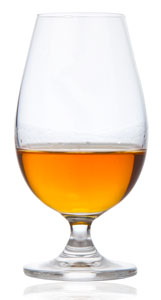Dram (unit)
Unit of mass or volume in some measurement systems From Wikipedia, the free encyclopedia
The dram (alternative British spelling drachm; apothecary symbol ʒ or ℨ;[a] abbreviated dr)[4][5]: C-6–C-7 [6] is a unit of mass in the avoirdupois system, and both a unit of mass and a unit of volume in the apothecaries' system.[5] It was originally both a coin and a weight in ancient Greece.[7] The unit of volume is more correctly called a fluid dram, fluid drachm, fluidram or fluidrachm (abbreviated fl dr, ƒ 3, or fʒ).[4][5]: C-17 [6][8][9][10]
Ancient unit of mass

- The Attic Greek drachma (δραχμή) was a weight of 6 obols, 1⁄100 Greek mina, or about 4.37 grams.[11]
- The Roman drachma was a weight of 1⁄96 Roman pounds, or about 3.41 grams.[12][13]
A coin weighing one drachma is known as a stater, drachm, or drachma. The Ottoman dirhem (Ottoman Turkish: درهم) was based on the Sassanian drachm, which was itself based on the Roman dram/drachm.
British unit of mass
The British Weights and Measures Act 1878 introduced verification and consequent stamping of apothecary weights, making them officially recognized units of measurement. By 1900, Britain had enforced the distinction between the avoirdupois and apothecaries' versions by making the spelling different:[14]
- dram now meant only avoirdupois drams, which were 1⁄16 of an avoirdupois ounce. An ounce consisted of 437.5 grains, thus making the dram exactly 27.34375 grains.
- drachm now meant only apothecaries' drachms, which were 1⁄8 of an apothecaries' ounce of 480 grains, or equal to 60 grains.
Modern unit of mass
In the avoirdupois system, the dram is the mass of 1⁄256 pound or 1⁄16 ounce.[5]: C-6 The dram weighs 27+11⁄32 grains,[5]: C-6 or exactly 1.7718451953125 grams.[5]: C-14
In the apothecaries' system, which was widely used in the United States until the middle of the 20th century,[15] the dram is the mass of 1⁄96 pounds apothecaries (lb ap), or 1⁄8 ounces apothecaries (oz ap or ℥)[5]: C-7 (the pound apothecaries and ounce apothecaries are equal to the troy pound (lb t), and troy ounce (oz t), respectively).[5]: C-6–C-7 The dram apothecaries is equal to 3 scruples (s ap or ℈) or 60 grains (gr),[5]: C-7 or exactly 3.8879346 grams.[5]: C-14
"Dram" is also used as a measure of the powder charge in a shotgun shell, representing the equivalent of black powder in drams avoirdupois.[16]
Unit of volume

The fluid dram (or fluid drachm in British spelling[17]) is defined as 1⁄8 of a fluid ounce,[5]: C-5, C-7 and is equal to exactly:
- 3.6966911953125 ml in the U.S. customary system[5]: C-5, C-12
- 3.5516328125 ml in the British imperial system[5]: C-7 [18]
A teaspoonful has been considered equal to one fluid dram for medical prescriptions.[19] However, by 1876 the teaspoon had grown considerably larger than it was previously, measuring 80–85 minims.[20] As there are 60 minims in a fluid dram,[5]: C-5, C-7 using this equivalent for the dosage of medicine was no longer suitable.[20] Today's US teaspoon is equivalent to exactly 4.92892159375 ml, which is also 1⁄6 US fluid ounces, 1+1⁄3 US fluid drams,[5]: C-18 or 80 US minims.[5]: C-5
While pharmaceuticals are measured nowadays exclusively in metric units, fluid drams are still used to measure the capacity of pill containers.
Dram is used informally to mean a small amount of liquor, especially Scotch whisky.[21][7] The unit is referenced by the phrase dram shop, the U.S. legal term for an establishment that serves alcoholic beverages.[22]
In popular culture
The line "Where'd you get your whiskey, where'd you get your dram?" appears in some versions of the traditional pre–Civil War American song "Cindy".[23] In the Monty Python's song "The Bruces' Philosophers Song", there is the line "Hobbes was fond of his dram". In the old-time music tradition of the United States, there is a tune entitled "Gie the Fiddler a Dram",[24][25] "gie" being the Scots language word for "give", brought over by immigrants and commonly used by their descendants in Appalachia at the time of writing. "Little Maggie," a traditional song popular in bluegrass music, refers to the title character as having a "dram glass in her hand."[26]
In the episode "Double Indecency" of the TV series Archer, the character Cheryl/Carol was carrying around 10 drams of Vole's blood and even offered to pay for a taxi ride with it.
In Frank Herbert's Dune, the Fremen employ a sophisticated measurement system that involves the drachm (and fractions thereof) to accurately count and economize water, an ultra-precious resource on their home, the desert planet Arrakis.
In the video game Caves of Qud water is used as the primary currency, being measured by the Dram.
Notes
- In Unicode, a standard designed to allow symbols from all writing systems to be represented and manipulated by computers, the dram symbol has no dedicated symbol.[1] Typically, the lowercase ezh, or "tailed z", (ʒ) is used,[2] and the Unicode code table entry for ʒ reads "LATIN SMALL LETTER EZH = dram sign".[3] However, the upper-case letter z in Blackletter/Fraktur hand. i.e. ℨ is also seen. Found in Unicode Mathematical Alphanumeric Symbols block, ℨ is meant to be used in mathematics and phonetics, and is not recommended as an abbreviation for dram.
References
External links
Wikiwand - on
Seamless Wikipedia browsing. On steroids.